Napi’s Playground
At the time of first contact Siksikaisiṫaṗi (Blackfoot Confederacy) occupied a territory that ranged as far east as present day Manitoba west over the eastern range of the Rocky Mountains and the present states of Montana, Washington and Northern Wyoming.
At later times the territory as defined by our oral history as from the North Saskatchewan (Om”k̇ iiṫ”ṫaa) to the Cypress Hills (I’kimik̇oo) to Yellow Stone river (Ot”kwiit”ṫaa) to the Columbia River and Tobacco Plains in British Columbia. Our traditional leaders formed alliances through our traditional treaty making (Inyiistyuk̇uk̇stimaan) for the protection and preservation of our hunting grounds, trade and lifestyle.
At this time I’d like to talk about, what is known as Treaty Number 7, and the Canadian Government, and this we call inyiss∙ṫsok̇uk̇stimaan, a long time agreement, and our understanding of making treaty, with each other. We have been making treaties with each other for thousands of years, and these treaties many of them had been broken by ourselves with each other through warfare! We were a Warrior’s society, we are still a warriors society.
We have just agreed to live by the leadership of our elders, but at he same time this border called, iss∙sik⸱sk̇aaksin, means a line or making a mark. In this case this invisible border, at the time and what we knew of our country and the area that was designated as the point of these cairn’s laid across the United States. These stone cairns’ that were the English, British and American Government Borders, between 2 counties.
So at that time Canada was non-existent, there was no Canada, and the lands that were considered British lands that today is the continental Canadian, Canada you will say, now that being said, I will go back into my language, I will go back into niitsiiṗo”sin, my birth rite, and I’ll speak from the heart, about inyiss∙ṫsok̇uk̇stimaan, treaties and the story I’ve just shared with you.
ǎǎmaa, sṫămik̇∙ksistsii∙k̇aiyayii Lame Bull, k̇iiniik̇sii, k̇iṫsitṫaaṗiiminoon, kiik̇so’koowainoon, our relatives k̇iiniiṫaaṗii kiik̇so’koowainoon, real relatives, k̇yaaksii k̇iits’k̇oowaa, our tribe. The siksiik̇aitsiṫaaṗi k̇iisṫo’naan iino”k̇, iikaak̇ai tsiniik̇aasi aam”k̇ inyiss∙ṫsok̇uk̇stimaan. Iikaak̇ai tsiniik̇aaṫo’p,.there are many stories muṫuṗii, , maanistss·sksinniiṗii, maanistsiitaaṗ’ṗii maataak”k̇oot ṫooksaayaa, ǐǐniik̇so’k̇yaa i‘k̇ottsii ook̇aamootsii tsinniik̇uto’myaa. Among our people from the past there are many who can tell the story, we won’t be able to count the ones that can tell, how it happened.
I’k̇ot so’poiyaapii tsinniik̇uto’myaa ṫaak̇aa īītsinsiiyaa, saakainaa k̇siṗookīyaa, they were babies, and young boys and girls, ṫak̇aa iiṫaapaisiiyaa, they were a part of it when it happened, they were there children. Ǐǐso’poo yaaṗaisksinnnimyaa, they new firsthand how our people suffered. Oot sowoo”k̇oosaa, oot sowoo”k̇ “kwiṫaapiisaa, they learned through starvation and longer had the luxury from there past life. K̇yǐǐnikso’k̇yaa k̇iistoonaan k̇iṫsaakaanoowa ǐǐni ṗaitaapiiw”sin, istsiiṗaitaapiiyo’p īīnii, these were the ones who lives were given life from the buffalo. K̇ii k̇yǐǐnskok iiṫoamootsinsk̇umyaa, this was when be buffalo disappeared from our lives. ootk̇sowoo”k̇ “kwiṫaapiisaa
k̇yaa miiksii om”k̇aak̇ootsaapsiiks aawaamiiṫsupii sṫiiyainaakaas o”sokoiy The rich folks looked west from back east with the possibility of building a railway and gaining immense wealth. Īīṫiasskoonaak̇uṫtsii īīniiw, kyiiniimai istṫupoamootsinsk̇umyaa , From these trains they shot the buffalo for sport, this was the demise and extinguishment of the buffalo?
Kiiniiṫoyook k̇iisṫoonaan, no”k̇uṫaisṫo’p maako”ko”kwiiṫaaṗiiyoop, k̇yǐǐnisk̇ok no”k̇utanitīyaa īīniiks, we ourselves also killed the buffalo for food. Kokoosiks, k̇iṫ”kiimaanowa, kiik̇so’koowainoon, our children, our wives and our relatives, could also have something to eat and maako”ko”kwiiṫaaṗiisaa, natural wealth.
Aak̇o’mutṫoomaatup ǒ”k̇iṫtsii ṗaitaapiiw”sin, our lives began to change. Aak̇o’maat ṫaap īīnuk̇”tsii īīnii, the buffalo herds were getting smaller. K̇yaamai ṗinaaṗo”ts niiṫaiskaaṫoomyaa k̇utoyissiks, east of here was the 3 buttes they called the sweet pines. Aamaa stamikii aanii sṫămik̇∙ksistsii∙k̇aiyayiiw, iiṫ sṫainitsii, this buffalo bull gored Lame Bull to death, iiṫsit”ṗuṫtsii ooṫaas he knocked down his horse. K̇iit”k̇aapsii sṫămik̇∙ksistsii∙k̇aiyayiiw, Lame Bull died from his injuries!
K̇yǐǐniimai īīṫwaanii muṫuṗii, siksikaiṫsiṫaṗii aawaanii maaṫutṫo”k̇oonoyiioo ṗaitaapiiw”sin. This was when our people the Blackfoot Confederacy would say we could no longer find our source of life. Īīmaaṫai ṗoonyaakiyaai muṫuṗii, isṫainiiyaa maa”ksoowaaṫo”ṗii, our people began to starve to death, dying from want of something to eat. The people were destitute they could only dress in cloth rags they dressed in k̇imaataiṗisstsii the pitiful cloth.
K̇īīniiksii siksikaiṫsiṫaṗi, the Blackfoot Confederacy and k̇īīniiksii no”kitsitṫaṗii what we called, different people, they also fought with their government. siksikaiṫsiṫaṗi, the Blackfoot Confederacy, never took up arms against the government.
̇k̇ii k̇iisṫoonaan siksikaiṫsiṫaṗi, aak̇”k̇ootṫanyo’p iikskoonaaṫaaṗii k̇iṫo”wsin. the Blackfoot Confederacy can say how powerful our traditional territory is! Maaṫtsaam aanisṫuṗii īīṗo”sin, It is not just talk! Maat o”k̇ootṫsaapyaaniṫooop k̇iṫo”wsin, we can not describe in English the meaning of k̇iṫo”wsin. Today we say our territory.
k̇iisṫoonaan niiṫṫow”saatṫo’p amoo k̇iṫsaa”k̇oōminoon, we claimed our land as our own! Aastsisk iss·sṫoonaat”k̇iṫaaṗissk̇oosts, dangerous lands unfamiliar to us. maaṫoomaiṫtuṗii aiss·siitsimyaa, the first people were very conscious of these lands they would not go to them, Instead iikaak̇oomiitsimyaa ǐǐnoom iiṫo’po’p. we favored these lands we lived on, k̇iiṫaitsinnik̇aaṫoomyaa they told stories Kyǐǐniimai iiṫaitsinnik̇aaṫoomyaa, ā∙ṗuṫt”sōma”k’ iit”ṫaa, north big river, boundary of Blackfoot Territory, North Saskatchewan River.
Miisṫup ā∙ṗuṫt”so”ts further north about 300 miles, K̇yīīno’ki siksikaiṫsiṫaṗi ooṫo”wsin is the description of siksikaiṫsiṫaṗi, traditional territory. ṫaak̇aa ǐǐniiksii k̇aa”ṫoomii, k̇aa”ṫoominoon other tribal warriors who we waged war against ăsin∙năawa, Cree people, ṗin∙năaṗiisinaa’ – Assiniboine, Sioux also other eastern tribe’s unknown to Ṗīīk̇unii, k̇ō’tṫō’nai, Kootenay.
There were many of them who lived in the north, ā∙ṗuṫt”sō”ts.
These are the ones siksikaiṫsiṫaṗii, fought with. K̇yaaksi k̇aa”ṫoomiiks, began to learn that we had diminished, isṫainiiyoop maa”kswaato’p, we were dying of starvation, isṫainiiyoop simsin liquor, isṫainiiyoop , ǐisṫ∙tsīīss∙sṫōomyaaṗii, disease! K̇iiṫoomaatup ss·skaatsimyaaa k̇ii ṗaitaapiiw”sin, the government began to pay close attention to the way we were living our lives.
k̇ii no”k̇aattsiṫṫoṫoyaa k̇iisṫonaan, iiṗo”sup aamitṫoṫyaa, aamii ṗinaapo”ṫs no”k̇aat inyiss∙ṫsiimii niitsitaṗi, they came west to our people our own people made treaties amongst ourselves. ̇k̇ii k̇ainiimai, iiṫooṫok̇sīyaa k̇iisṫonaan ī’k̇itsiik̇um, k̇yǐǐinaak̇ok iiṫaawaaniiyaa, ī’k̇itsiik̇isk·sk̇aaksin inyiss∙ṫsook̇ukstiimaan. This is where the Canadian Government reached the point of conclusion of numbered treaties with our first nations and number 7. This is when the people would say Treaty number 7, no”kuṫ inyiss∙ṫsiimii k̇unnaitsiṫaaṗi, the government had concluded treaties with all the recognized tribes in Canada.
K̇iitsiiso’kii, the point that sticks out flat
Table Mountain – An important area for seeking spiritual vision‘s from the spirit world, Also a favourite place used for hunting the ṗonok̇a Elk in the fall time
K̇īys·sk̇o”psoyis Porcupine tail
Porcupine Hills
Ṗunii ik”ṫaatsiks – Wall Curtains,
Livingston Range Rocky Mountain
Nǎǎṗiit’ṫaa
The Gap, confluence of Oldman’s River
ǎǎk̇ii ṗisk̇aan
Woman’s Buffalo Jump
k̇ssistiik̇oom oomoyii
Thunder Knoll, Crownest Mountain
Remains of the site where Napii gambled playing the hoop & arrow game for siksikaitsitapii traditional territory, where the rivers flow east and west


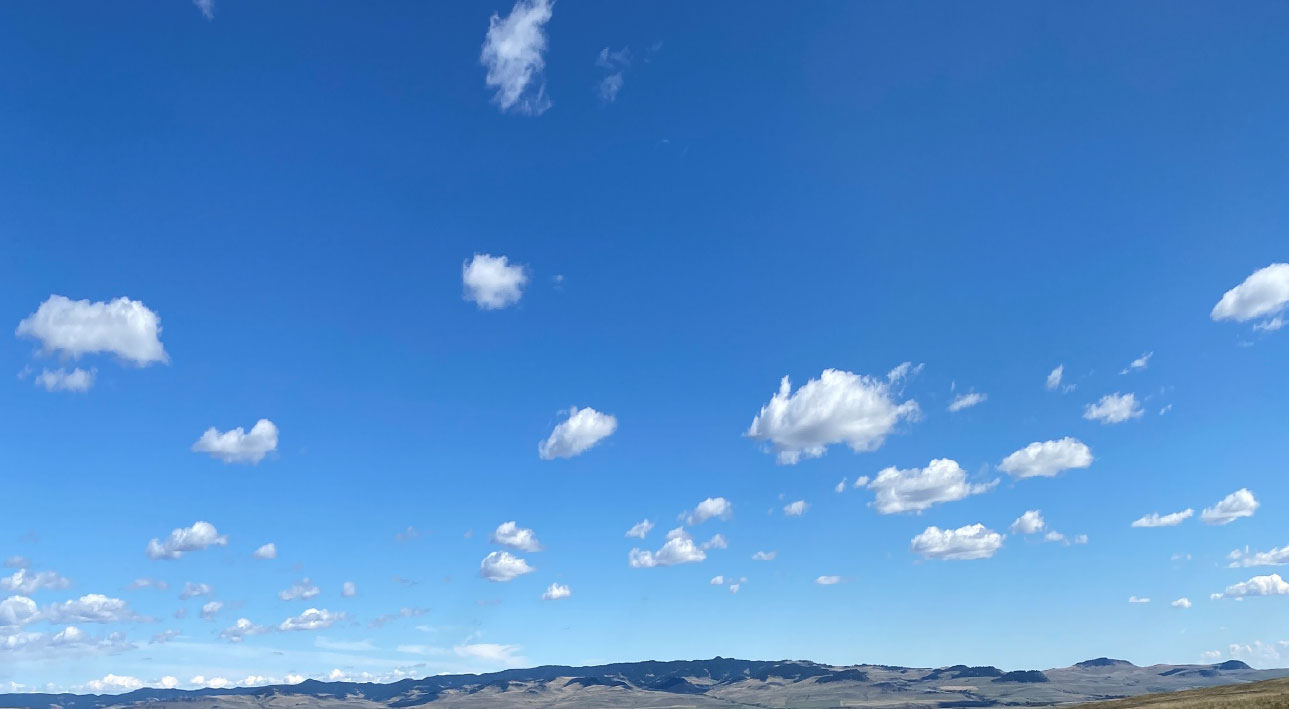
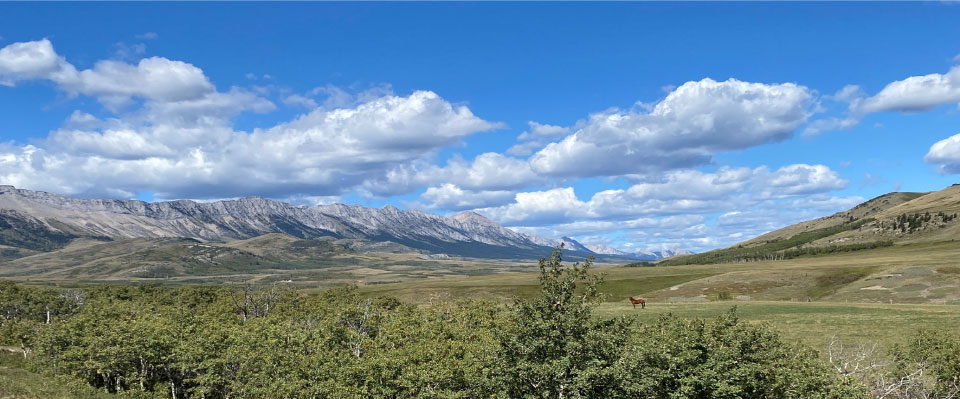
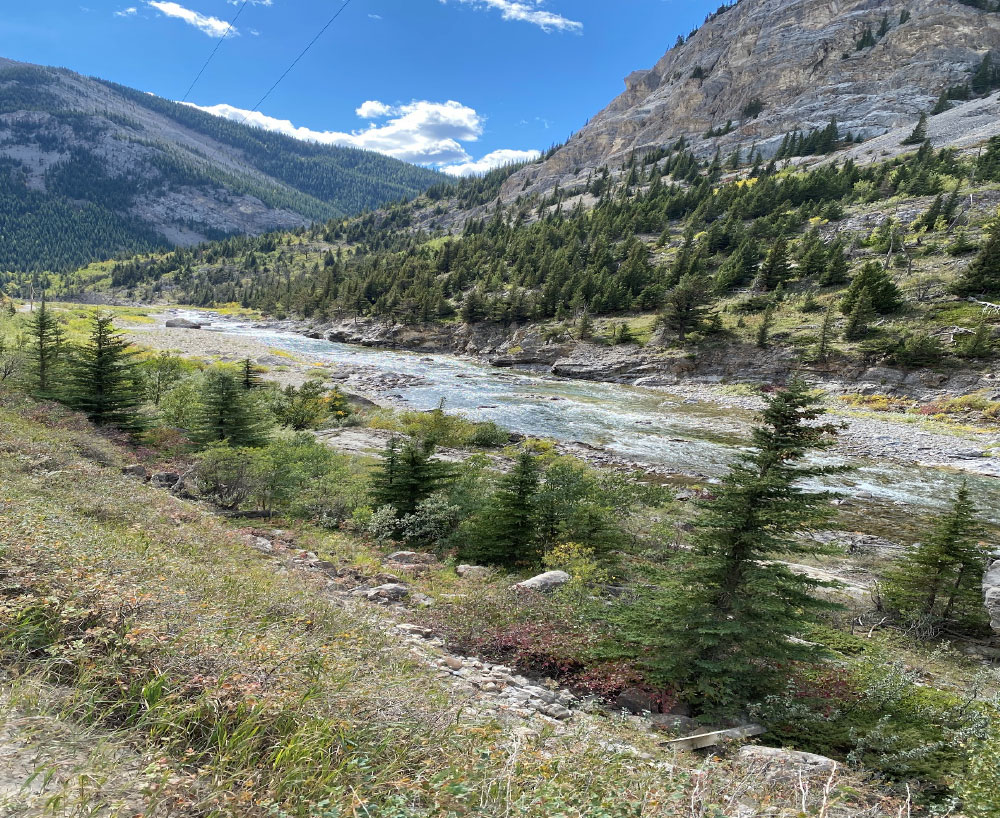
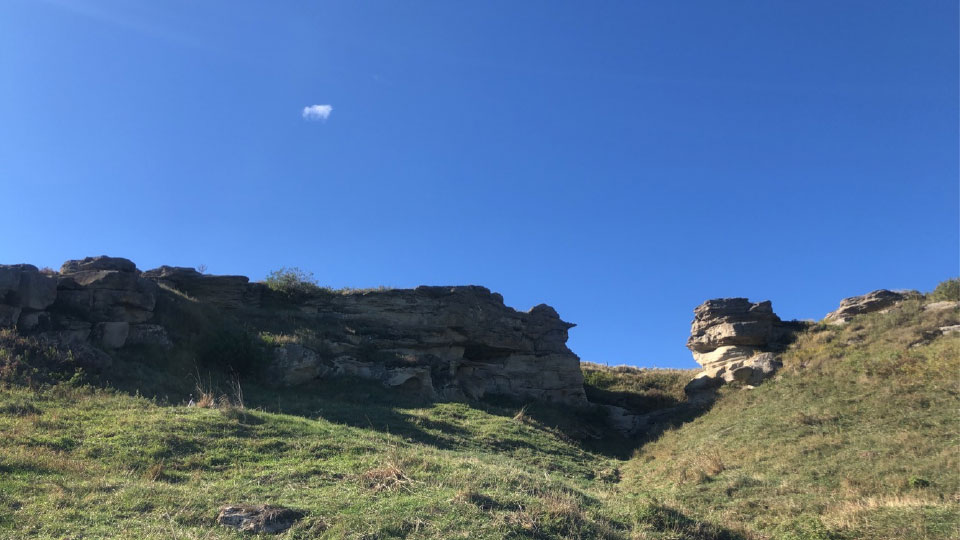
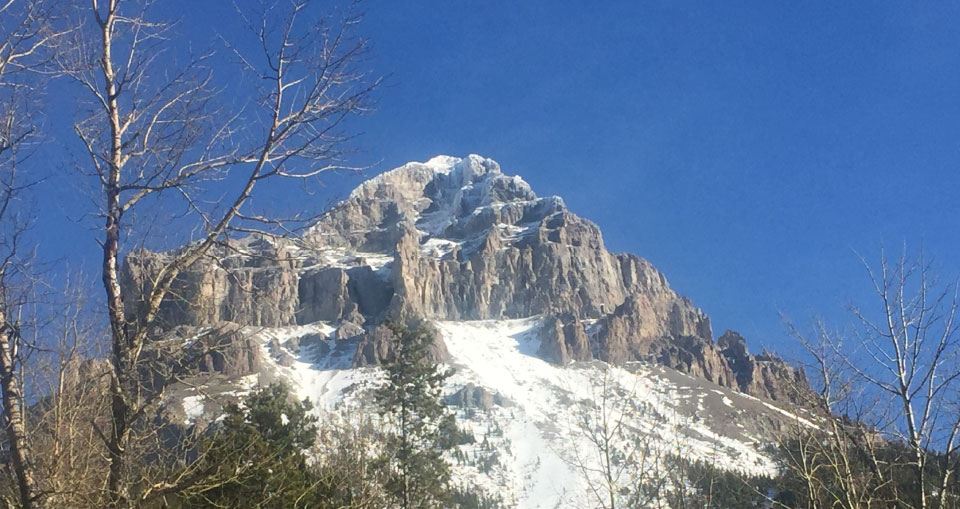
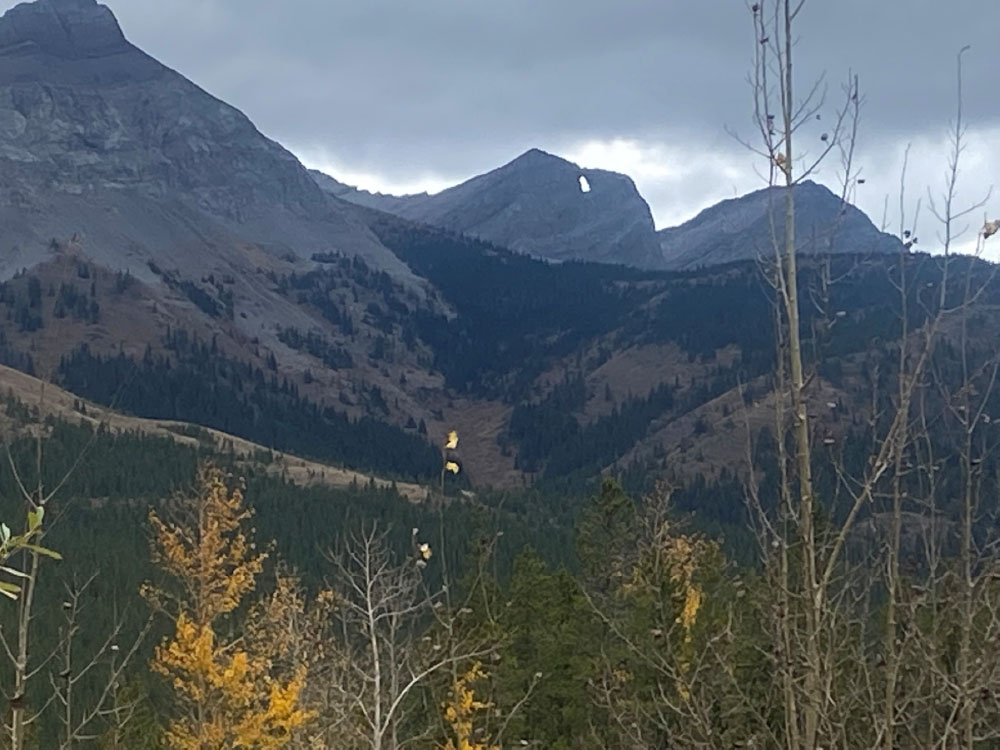
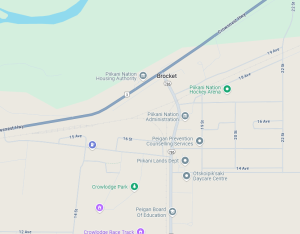 1805 12 Ave, Brocket, AB T0K 0H0
1805 12 Ave, Brocket, AB T0K 0H0